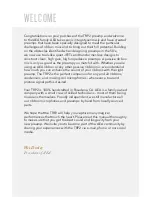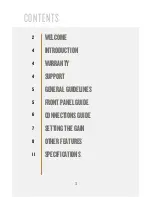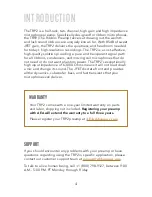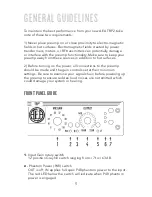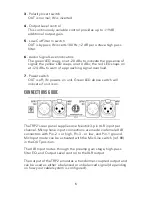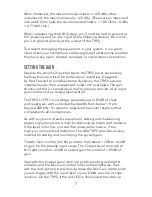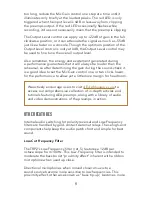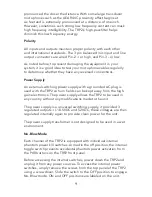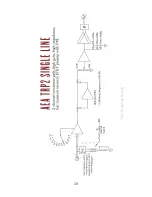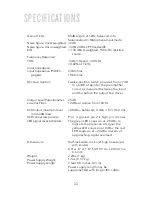
too long, reduce the Mic Gain control one step at a time until it
illuminates only briefly at the loudest peaks. The red LED is only
triggered when the input level is 4dB or less away from clipping
the preamps output. If the red LED occasionally flashes while
recording, it does not necessarily mean that the preamp is clipping.
The Output Level control can apply up to +22dB of gain in the full
clockwise position, or it can attenuate the signal as much as -55dB
just like a fader on a console. Though the optimum position of the
Output Level control is unity at 0dB, the Output Level control may
be used to fine tune the overall output level.
Also remember, the energy and excitement generated during
a performance guarantees that it will always be louder than the
rehearsal, so after determining the gain during the sound-check it
is a good idea to set the Mic Gain control one or two clicks lower
for the performance to allow yet a little more margin for headroom.
OTHER FEATURES
Internal audio switching for polarity reversal and Low-Frequency
filters are handled by gold-contact Aeromat relays. These high-end
components help keep the audio patch short and simple for best
sound.
Low-Cut Frequency Filter
The TRP2’s Low-Frequency filter (ref. 5) features a 12dB per
octave slope from 100Hz. This Low-Frequency filter is intended to
moderate the bass boost “proximity effect” inherent with a ribbon
microphone when used up close.
Directional microphones when moved closer on-axis to a
sound source become more sensitive to low frequencies. This
proximity effect, otherwise known as “bass tip-up,” becomes more
8
We actively encourage users to visit
AEAribbonmics.com
to
access our comprehensive collection of in-depth articles and
tutorials featuring AEA preamps, along with a library of audio
and video demonstrations of the preamps in action.


